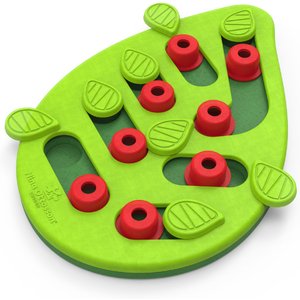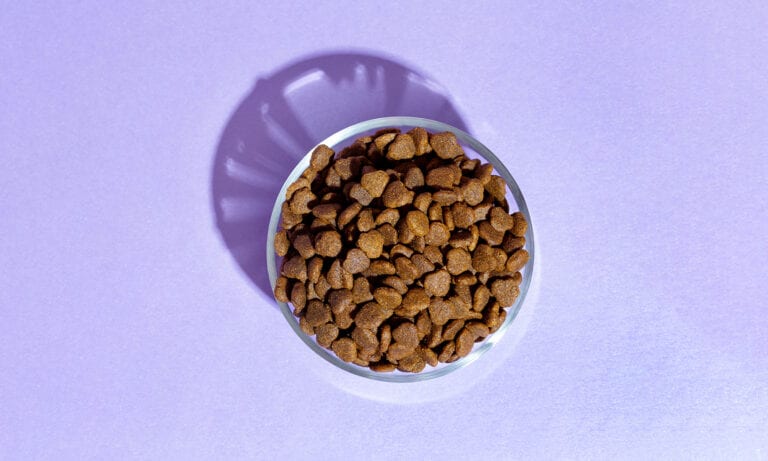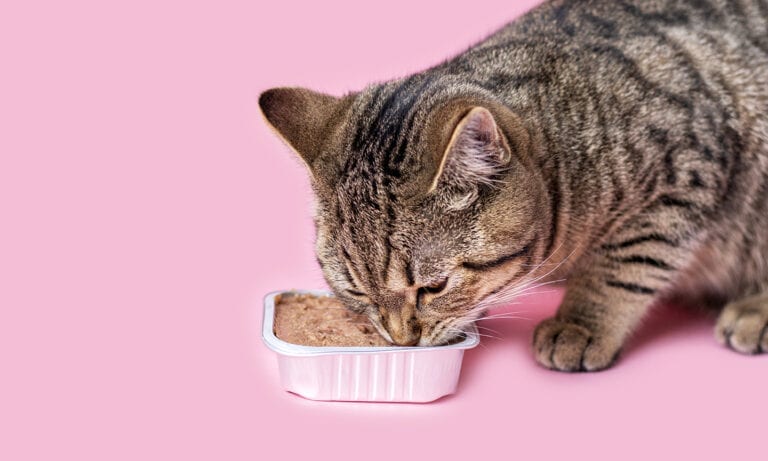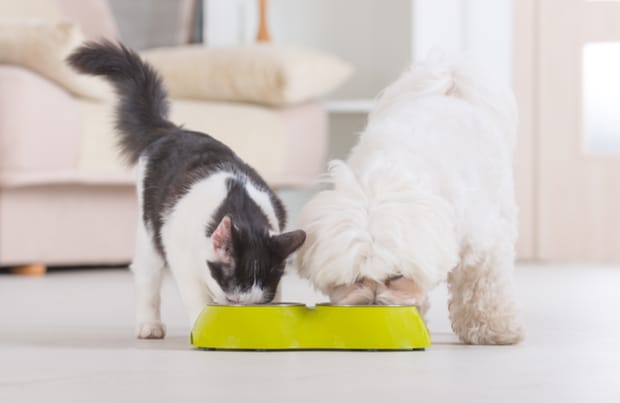In This Guide:
What Should Cats Eat?
In the wild, cats instinctively hunt for their own food, which keeps them active and healthy. But it’s up to pet parents to provide cats with food that is both complete and balanced—meaning it contains everything cats need and in the right proportions. At least 90% of your cat’s diet should be made up of a complete and balanced cat food.
“Cats have requirements for macronutrients (e.g., protein, fat) and micronutrients (e.g., many vitamins, minerals),” says Valerie Parker, DVM, DACVIM (SAIM, Nutrition), professor at Ohio State University’s College of Veterinary Medicine.
Where those nutrients come from is important, too. As obligate carnivores, cats need meat more than anything. That’s where they get essential nutrients, such as amino acids, vitamins, and minerals.
“Every nutrient category has some unique feature that requires an animal source to meet their needs,” says Julie Churchill, DVM, PhD, DACVIM, professor at the University of Minnesota.
Look for cat foods that meet the nutritional criteria set by the Association of American Feed Control Officials (AAFCO), an organization that sets standards for pet food in the U.S. The AAFCO also has standards for different age ranges, which will help you find the right food depending on where your cat is in their life.
Kitten Diet
A kitten should spend the first few weeks of life feeding on their mother’s milk. After that, they’ll need a nutrient-rich diet that supports growth.
“Kittens have higher needs for certain nutrients than adult cats—for example, calcium and phosphorus,” Dr. Parker says. She recommends looking for kitten foods with “AAFCO statements that say that they provide complete and balanced nutrition for growth or all life stages.”
Dr. Churchill notes that kittenhood is also a good time to expose your kitty to foods of different textures in order to cultivate food flexibility later in life. Letting your kitten try both dry foods and wet foods will make it easier to change their diet later if needed.
For dry food, try Iams™ ProActive Health, a 100% complete and balanced dry food made mostly of chicken. And for wet food, Purina® Pro Plan® canned food is a great choice.
Adult Cat Diet
When your kitten turns 1 year old, switch them to an adult cat food.
Your adult cat still needs complete and balanced cat food, but look for one with lower calories to avoid obesity, which affects over 60% of domestic cats. Energy needs are lower in middle-aged cats, Dr. Parker says, so your full-grown cat needs less protein, calories, and fat than when they were a kitten.
Hill's® Science Diet® adult food is a great option that contains L-carnitine, a supplement designed to help prevent weight gain.
Senior Cat Diet
AAFCO dietary recommendations are the same for senior cats as they are for adults. So, you can continue feeding your senior cat the same diet they ate throughout adulthood—as long as there are no health concerns for your kitty.
But cats may develop special dietary needs if (and when!) they face a health issue. Diseases such as diabetes, gastro-intestinal disease, and kidney disease require dietary changes under a vet’s guidance. Some senior cats need more calories, too, Dr. Parker says.
For healthy senior cats with no dietary restrictions, try Iams™ ProActive Healthy Senior food, which includes probiotics and natural fibers for easy digestion. You may also want to try Hill's® Science Diet® Adult 7+ food, which comes in multiple flavors for your companion to try.
What To Look for in a Cat Diet
There are dozens of food options on the market, so how do you know what will make for a healthy cat diet?
- Look at the ingredient list. While the list itself won’t give you enough information, pet parents need to pay attention to the nutrient profile, which breaks down the nutritional content of a given food.
- Check AAFCO guidelines. The AAFCO provides guidelines for nutrient requirements for cats at different life stages (kitten, adult, and senior). Comparing AAFCO guidelines to a food’s nutrient profile can help you determine whether the food is complete, balanced, and nutritious, Dr. Parker says.
- Look into WSAVA criteria. For pet parents who want to dig even deeper, Dr. Churchill recommends asking their veterinary team about foods selected with the World Small Animal Veterinary Association (WSAVA) criteria. WSAVA guidelines include what to look for in a brand of food.
There are lots of reputable brands to choose from—like Purina and Hill’s. Your vet can help you pick the best brands and products depending on your cat’s age and health needs.
Dry Cat Food vs. Wet Cat Food: What Should I Feed My Cat?
Dry Food
Benefits
- More affordable overall
- Good for automatic feeders
- Good for cats who prefer grazing
- Can be used with toys for enrichment and stimulation
Considerations
- Easy to overfeed your cat
- Can be hard for some cats with dental problems to chew
Wet Food
Benefits
- High protein
- High moisture and can help with dehydration
- Good for cats with certain health conditions, such as urinary tract disease or obesity
Considerations
- More expensive overall
- Needs to be refrigerated once opened
What Can I Feed My Cat Besides Cat Food?
If you’re like many indulgent pet parents, you might be wondering “What can I feed a cat as a treat?” As mentioned, cats need a complete and balanced diet to be healthy, and 90% of their daily cat diet should be healthy cat food.
Most cats need around 200 calories a day, according to Dr. Churchill, so you should only give yours 20 calories worth of treats a day—at most.
As for human food, Dr. Churchill recommends well-cooked meat, like chicken or salmon. You can experiment with other cat-safe human foods, too, including strawberries, pumpkin, or hard cheese.
Dr. Churchill says the best option is to feed your cat complete and balanced treats “by giving them creative outlets to gather food.” This way, your cat gets mental stimulation and physical activity out of it, too—just as they would if they were hunting for their own food. Think food puzzles, like this ladybug-themed game.
- Learn your cat’s preferred routine. Some kitties like grazing on their food throughout the day, while others do well with regular mealtimes. You can experiment with both to see what works best for you and your cat.
- Don’t assume your cat is a picky eater. If your cat isn’t eating their food, take them to the vet to check for any underlying medical conditions that could affect your cat’s appetite.
- Make mealtimes low-stress. Cats sometimes change their eating habits because of outside stressors, like a new household addition. Help create a low-stress experience for your cat by moving their food dish to a quiet, low-traffic area and keeping the space clean.
- Add variety to their diet. Keep your cat engaged by offering them new flavors or different types and textures of food.
No matter what—or how—you choose to feed your cat, always work closely with your vet. “I'm a huge believer in individualized nutrition, and the veterinary team that monitors your cat is the expert in your cat,” Dr. Churchill says.
Learn More about feeding your cat
Share:

















